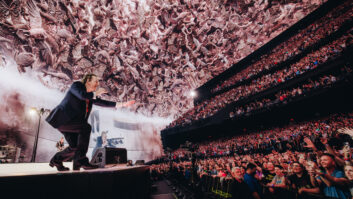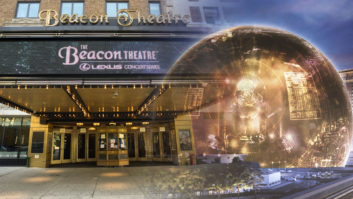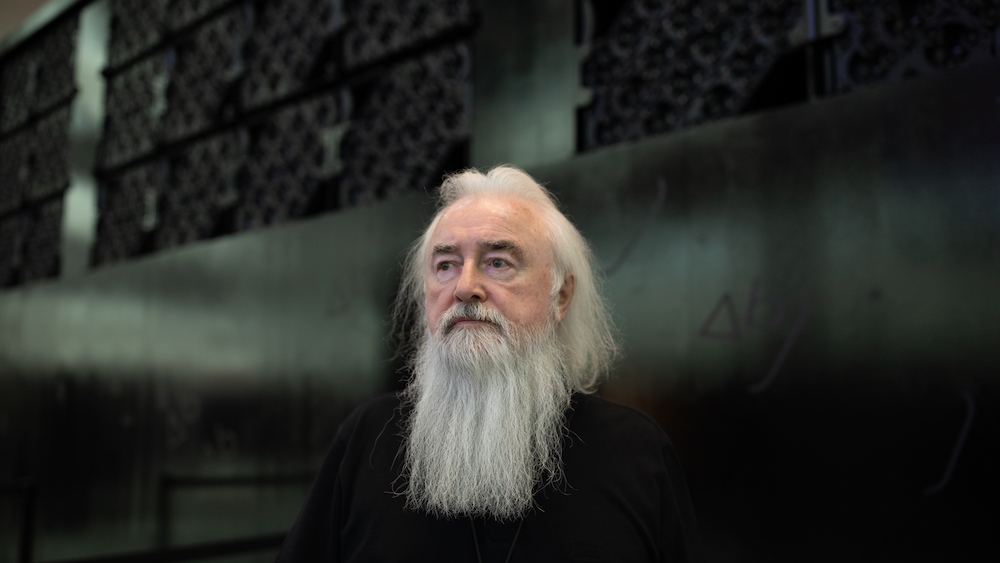
The multi-billion dollar-Sphere in Las Vegas is a venue that has never been attempted before, with immersive audio making every seat sound like it’s eight rows from the stage. Figuring out how to harness that audio firepower and also wrangle the epic sounds of U2 into it fell to Joe O’Herlihy, the band’s FOH engineer throughout its entire career. Here, in Part 2 of our U2 Sphere coverage, O’Herlihy shares how he prepped for the Sphere shows, recounts rehearsals, shares the mixing gear being used and more. Don’t pass up Part 1, where he and the band’s renowned producer Steve Lillywhite discuss how they approached the sonic palate of Sphere.
FOH COMMAND AND CONTROL
O’Herlihy uses his usual mixing console, a DiGiCo Quantum 7, to drive the system. Back in the mid-to late-aughts, at Glasgow’s Hampden Park, the damp conditions caused his faders to freak out during a U2 show. “It happened to me once and will never happen again,” he says ruefully. Now, his FOH console always has a redundant engine, along with a mirror-image Quantum 7, also with a redundant engine, with automatic switchover.
That mission-critical attitude has made U2 a DiGiCo power user, the production regularly carrying eight consoles on tour—three for monitors, for Bono, Edge and the rhythm section, each with a constantly running mirrored backup desk, plus O’Herlihy’s redundant pair. “Clair Global have done a great job for us,” he says of the production provider, “and have done for a long, long time.”
Each FOH desk has 128 channels, with 32 of the 48 aux sends driving the Holoplot array locations at Sphere, he details. So, for example, “I’ve got nine channels of bass—different amps, different DIs, for different parts of the setlist— and they all send to 10 and 11,” the proscenium array pair group directly above bassist Clayton.
While developing his sound design for U2’s show, O’Herlihy worked alongside Erik Hockman, who leads the audio and acoustics technologies team for MSG Ventures and at Sphere, whom he first encountered at New York’s Madison Square Garden during Innocence + Experience’s eight-day run. Principal audio artist Paul Freeman, MSG’s “Beam Meister” at Sphere, handled the dynamic spatial elements.
“If I have a keyboard that is swirling, I send that to Paul and he designates the destinations where you will hear sound. He triggers the movement path using Meyer Sound Spacemap software,” O’Herlihy elaborates. “We’re using it sparingly.”
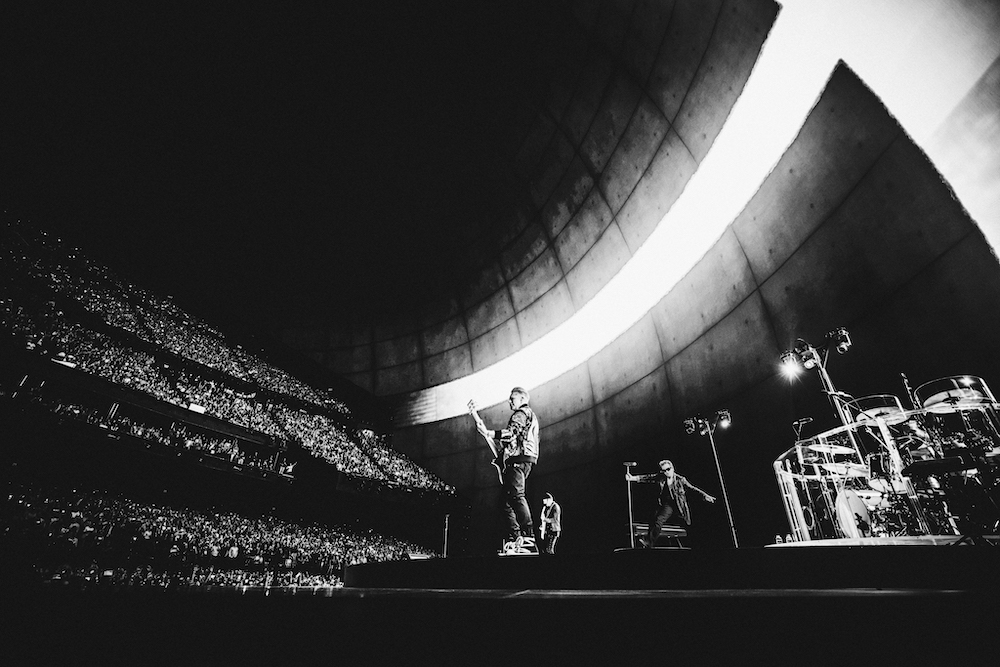
PREPPING FOR SPHERE SOUND
The sound design, source positioning and panning moves were all worked out well in advance of the band beginning production rehearsals at Sphere. In March, seven months before the venue was to open, the band moved into the Ardmore Studios sound stages near Dublin and began rehearsing. “I set up the consoles in another studio, and directly in front of me was a mock-up of the proscenium arch, with the immersive system overhead and the surround sound system behind me. We started building a version of each song specific to the Sphere from the very first rehearsal in March.”
In April, Bono took a break to perform an 11-show residency at the Beacon Theatre in New York City, part of his Stories of Surrender book tour. MSG Entertainment, which owns the Beacon, has exclusively operated an installed Holoplot system there since late August 2022.
“So I had a month with the Holoplot system,” O’Herlihy chuckles. “I was hands-on, learning the technology and how it works, and learning all the nuances from an EQ point of view. It was great to evaluate the Holoplot system in that theater, because it was completely different to the setup that we had at rehearsals.”
Work at Ardmore Studios wrapped in mid-May, and the U2 team began traveling back and forth to the Dome, MSG Entertainment’s facility opposite the entrance to the Burbank airport in Los Angeles. The building houses a wrap-around LED screen that is one-quarter the scale of Sphere, with an immersive Holoplot speaker system and haptic-enabled seating. “We were looking at a lot of content and listening to stuff that we had on Pro Tools so that we could configure some of the setlist,” O’Herlihy says. An immersive mix room in the building is outfitted with Genelec speakers positioned around and above a single seat, where engineers can prepare mixes for the full-scale Sphere.
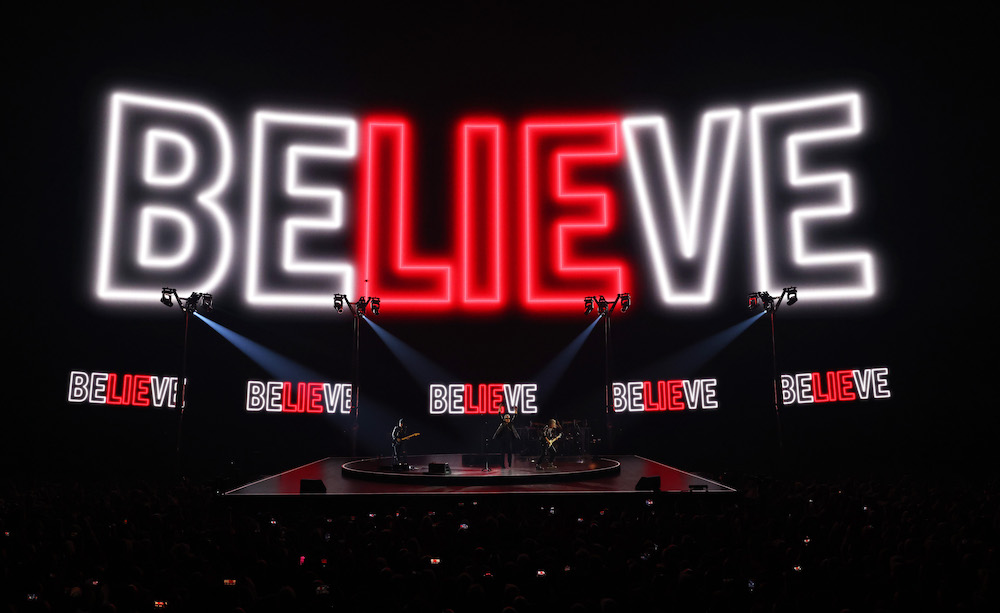
Then, everyone jetted off for more rehearsals, this time at Victorine Studios, a film lot in Nice in the south of France. “The band was in Studio 1 and I was in Studio 4 with my mock-up system again,” O’Herlihy recalls. “Every song was configured and designed appropriately with movement for the front proscenium system, for the bones of the rock and roll side of things. We were also able to split out the various immersive sounds to the local destinations overhead and do a lot of the orchestral and symphonic imagery and send that to the surround system up on top.”
All these exercises were fine and dandy, O’Herlihy observes, but how would everything translate in the venue? On day one at Sphere, he hit play on the multitrack as the creative team waited with bated breath. “The transition was amazing, and the acoustics are stunning, a credit to Jim Griffiths and Vanguardia,” he says, referring to the U.K.-based environmental and technology consulting firm and its director.
O’Herlihy should probably not have been surprised that everything translated perfectly after all the effort that he, the U2 creative crew and MSG’s technologists put into the show and the venue. After all, he says, from when he initially evaluated the Holoplot system in Germany to Edge’s very first chord on opening night, “It was two years of really hard work.”
